The hyphen symbol. We see this punctuation mark in nearly every paragraph in the English language. Whether it’s separating words or joining words, we see that it can appear in common phrases. For example, “mother-in-law” joins words together. But what is the hyphen? How is it used? When should it be used? What is a hyphen notation? A non-breaking hyphen? And how can I get my computer to spit out this punctuation?
What is a hyphen?
The hyphen sign (-) is a punctuation mark that may be utilized to link two words together and divide syllables within a single word. Hyphenation is the process of using hyphens in a sentence.
A hyphenated term such as “brother-in-law” is an instance of this type of word.
Although hyphens and en dashes are not to be mistaken with one another, there are several instances in which their uses are similar (a hyphen or an en dash could be permissible, leaning on user selection.
Additionally, in casual writing, the hyphen is frequently used in places where the en dash would be expected.
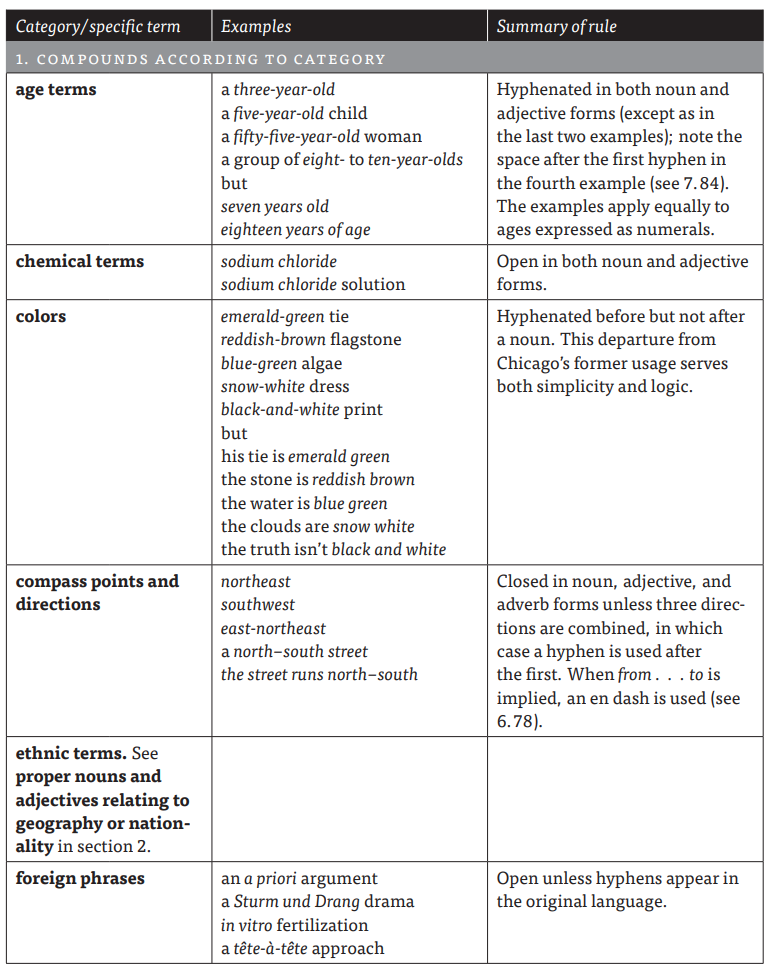
The hyphen represents a single commodity from an orthographic point of view. It can be displayed using any one of several different characters and glyphs, including the Unicode hyphen, the hyphen-minus, the soft hyphen, and the non-breaking hyphen.
Unicode refers to the most frequently used symbol representing a hyphen as the “hyphen-minus.” This name originates from the authentic ASCII norm, which referred to the character as the “hyphen (minus).”
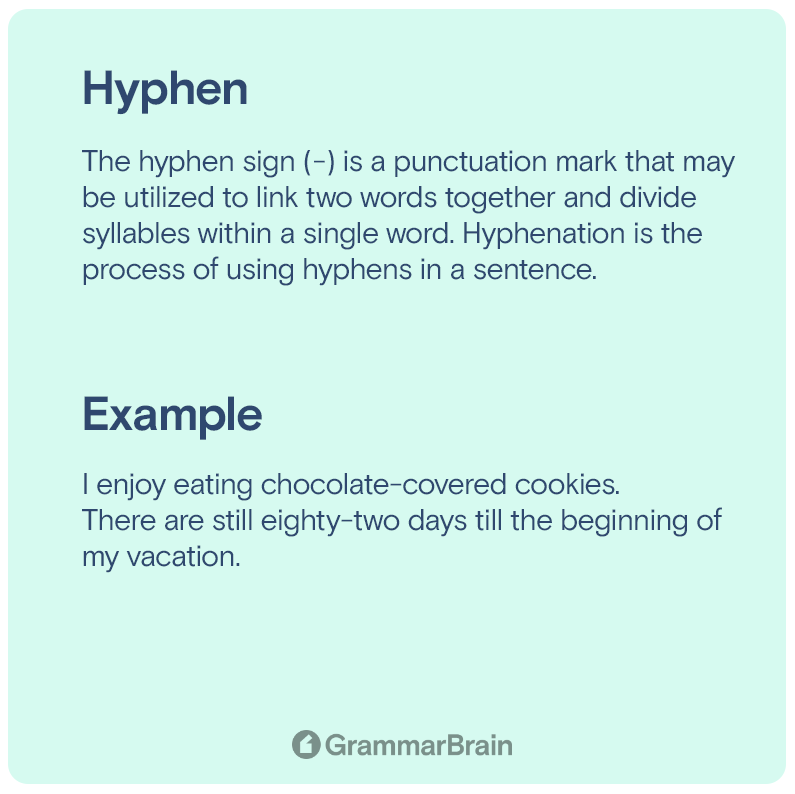
When to use a hyphen
Although many different style guides give extensive use suggestions, the English language does not have any specific rules regarding the hyphenation of words. These style guides do, however, have a significant degree of overlap in what they prescribe.
Most of the time, hyphens are utilized to break down single words into their component components or combine distinct words into a single unit.
Excluding when using a suspended hyphen, also known as hanging hyphen, that stands in for a repeating word, spaces are not added between a hyphen and any of the parts it connects.
| Modifiers Before Common Base (Use Hyphens) | Modifiers After Common Base (No Hyphens) |
| short- and long-term effects | the effects were short and long term |
| 4-, 5-, and 6-year-old girls | the girls were 4, 5, and 6 years old |
| 10th- and 11th-grade students | the students were in the 10th and 11th grades |
The style norms that apply to hyphens (and dashes) have developed through time to assist ease of reading in complicated formulations; editors may frequently allow departures from these conventions if they help rather than impede simple understanding.
Generally, two different applications call for a hyphen’s usage.
Compound vocabulary
Hyphens are used to create a wide variety of compound words. Here are several examples:
- sixty-eight, great-aunt, fast-moving, sold-out
However, certain compound terms do not have hyphens in them. Take, for instance:
- grandmother, boardroom, beachside, phone book, head coach
Compound adjectives are more difficult to use. Because it is possible to create an adjective out of virtually any two words that are brought to mind, dictionaries don’t always include the “temporary” compound terms that are commonly used.
When it comes to employing compound adjectives, there are two main guidelines.
If the compound adjective appears before the noun, then you need to include a hyphen in between the two words that compose it:
- I adore caramel-covered chocolates.
- Since the morning, Noah has been searching for fat-free foods.
In most cases, the hyphen is omitted from the compound adjective when it follows the noun in the sentence:
- The chocolates were caramel covered.
- Noah is hunting for snacks that are fat free.
Compound words are subject to the application of many other general criteria in addition to the two guidelines mentioned earlier.

If the primary word is capitalized, if it is a number, or if it is an abbreviation, you should use a hyphen when you are employing prefixes.
If a prefix finishes with the same letter as the main word, we may use a hyphen to make the term look less uncomfortable or ambiguous. If the prefix begins with the same letter as the main word, we may not use a hyphen.
Dividing words on line breaks
For reasons related to formatting, it is common practice to employ a hyphen to split a single word across two lines in some literary works, such as newspapers and magazine articles.
Although certain aspects of the format may differ from style guide to style guide, the main guidelines are often as follows:
- After each unbroken syllable, a word is separated into its component parts.
- Investigate the possibility of spontaneously deconstructing the term. You might, for instance, separate a word into its component parts by using the prefixes and suffixes it contains.
- If a word ends in -ing, a double consonant will be separated into two separate consonants.
- When separating a word into its component parts, just follow the hyphen already there in the term.
- Other rules and exceptions may need to be adhered to if the style guide specifies they are necessary.
With separation
Justification
When the text flows naturally, it is frequently preferable to split a word into two halves so that it can continue on the next line rather than shift the full word to the line after it. This is because moving the whole word to the line after it disrupts the natural flow of the text.
It is possible to syllabify the word by breaking it up at the syllable break closest to the beginning of the word.
When this is done, a hyphen is added to denote that the letters represent a word fragment as opposed to an entire word. This is done to differentiate between the two types of letters.
This allows for a more economical use of paper, the elimination of unnecessary river space, and the flush appearance of right-side margins (justification) without unnecessarily big word gaps. The issue of rivers is also lessened by this.
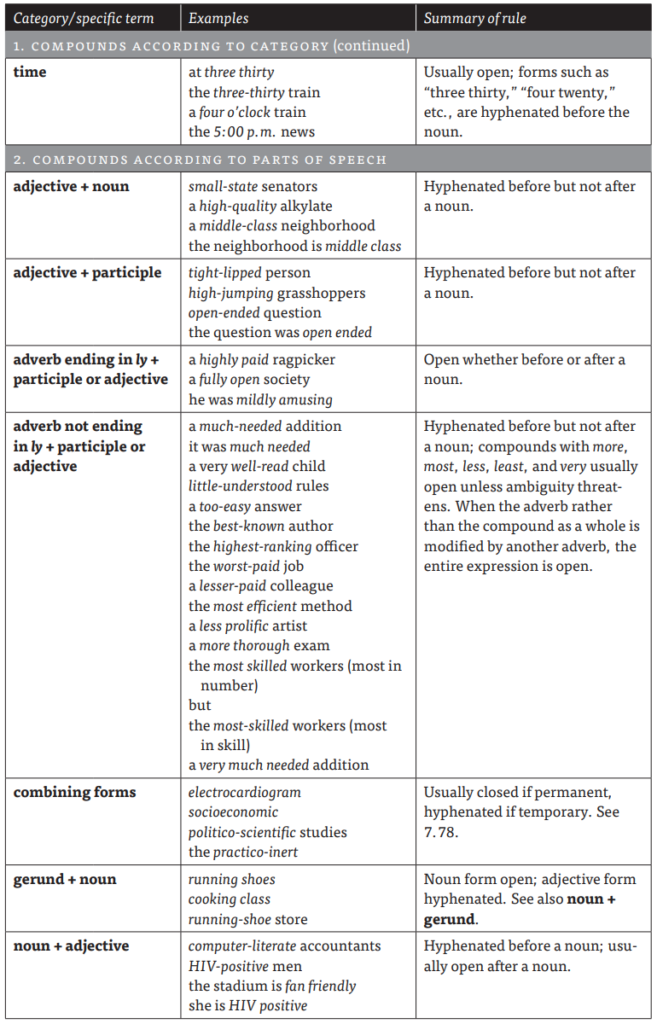
When the width of the column, or what is known in typography as the “line length,” is quite limited, this particular kind of hyphenation is at its most effective.
The rules (or norms) for accurate hyphenation might differ from language to language and can be rather complicated. Furthermore, they can interact with various orthographic and typesetting processes.
When combined with dictionaries, hyphenation algorithms are adequate for almost all types of written work, except for the most standard writing.
Prefixed
It is common practice to hyphenate prefixes such as de-, pre-, re-, and non-. This is done primarily when the unhyphenated spelling of the prefix is similar to that of another word or when the affixation is seen as being open to multiple interpretations, ambiguous, or “odd-looking” in some way. Examples of these situations include de-, pre-, re-, and non-.
On the other hand, the version without the hyphens, which is often called closed-up or solid, is the one that is most often recommended. This is especially true in circumstances in which the derivative in question has become somewhat familiarized or popularized as a consequence of regular use in a variety of contexts.
As a general rule, affixes do not use hyphens, unless the lack of a hyphen would have a detrimental influence on the intelligibility of the statement.
A General Principle Concerning Prefixes
As a general rule, you should try to avoid using a hyphen whenever possible. However, if the unhyphenated version contains a spelling error or seems to be too difficult to type, you should use a hyphen instead.
Here are some permanent rules:
- When writing “ex-” and “self-,” you should always use a hyphen.
- Never provide room for uncertainty.
Syllabification
There are a few instances in which hyphens are used to indicate syllabification.
An interpunct, sometimes known as a “middle dot” or a “hyphenation point,” is utilized by a number of British and North American dictionaries for this specific reason, as shown in the example of the word “syllabification.”
Because of this, the hyphen can be saved for use only in those instances where an actual hyphen is required. Hyphens can also be used in the same way to signify how a word is being spelled or how it should be spelled.
In the literature of the nineteenth century in the United States, hyphens were also employed erratically to split syllables in terms derived from native North American languages without regard to the etymology or sound of the words.

With joining
Compound modifiers
Compound modifiers are groupings of two or more words that alter the definition of different word when used in conjunction with that term. The meaning of a single word or many words might be altered as a result of these groups.
It is common practice to hyphenate a compound modifier that comes before a noun if it is not a combination of an adverb and an adjective.
This is done to avoid the compound modifier from being misunderstood. For instance, “German soccer player” and “little-celebrated artworks” both have compound modifiers that are hyphenated, such as “German-soccer player” and “little-celebrated artworks.”
Without the hyphen, it is unclear whether the author means a “player of German soccer” or a “German player of soccer.” It is also unclear whether the author means paintings that are “little celebrated” or paintings that are “celebrated” that are small.
Compound modifiers can be made up of three words or more, such in the phrase “mint-flavored icecream,” and they can serve both as adjectival and adverbial functions. On the other hand, if the compound in question is a common one, it is typically written without the hyphen.
In most cases, a hyphen is not utilized after a compound modifier that comes after the phrase to which it applies if the compound in question is considered to be a transient compound.
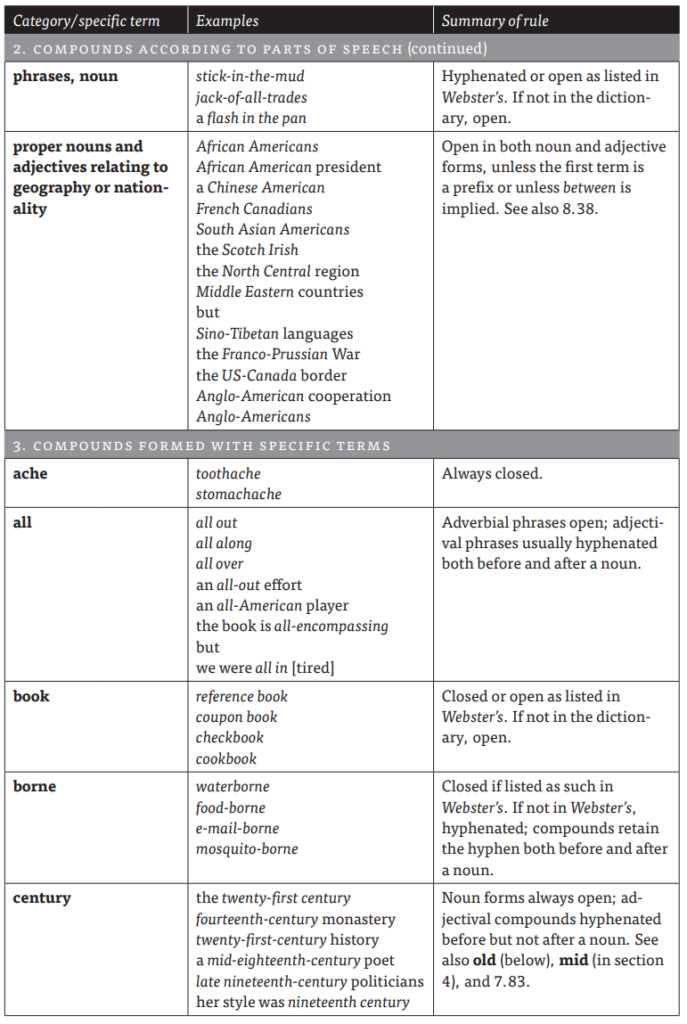
However, permanent compounds, which may be found as headwords in dictionaries, are considered to be invariable; hence, the hyphenation of these compounds will be utilized in both the attributive and predicative positions if the dictionary in question hyphenates them.
In the process of phrase modification, hyphens are typically utilized to join together numbers and words. Because, like other compound modifiers, dimensional measurements like weight, size, and time use hyphens in attributive position but not predicative position, this is the case when characterizing them.
This is the case because hyphens are only employed in attributive position (after the modified noun).
Object-verbal-noun compounds
The outcome of compounding an object with a verbal noun, such as egg-beater (a utensil that beats eggs), can occasionally be written with a hyphen between the two words.
Some authors do this all the time, while others just do it sometimes for clarity. In the sentence “my friends stood near a group of dinosaur lovers,” for instance, the absence of a hyphen creates the impression that the friends were near a group of loves who were themselves dinosaurs. This is an example of an ambiguous phrase.
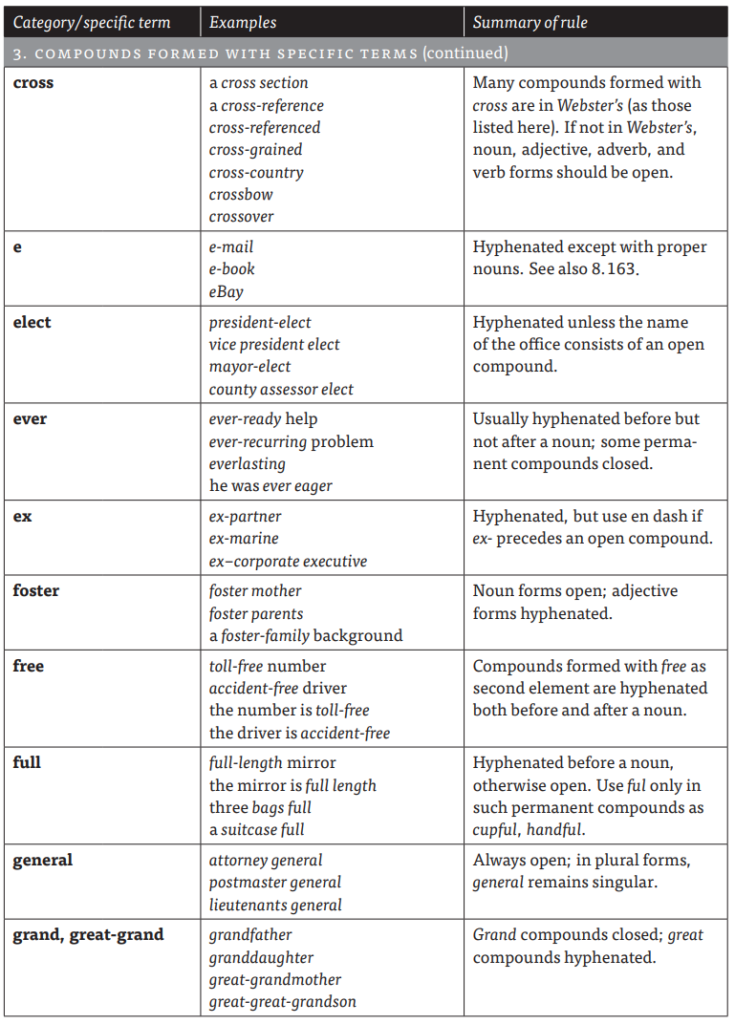
A man-eating crocodile is practically the opposite of a man-eating crocodile, as the former refers to a crocodile that eats humans while the latter refers to a man who consumes crocodile flesh. In a similar vein, a man-eating crocodile is a crocodile that eats people.
Personal names
The practice of merging two surnames with a hyphen to form a new surname, often called a “double-barrelled name,” is favored by certain married couples. This is far less prevalent now than it was in the past.
It’s possible that Shelly Thompson and Jose Miguel may eventually change their names to Shelly and Jose Miguel-Thompson.
Only the woman in certain countries is allowed to hyphenate her original surname by adding her husband’s surname to the end of it.
When a name is already hyphenated, it is common practice to remove some elements of the name. Shane Watson and Sidney Taylor-Wood, for instance, changed their names to Shane Taylor-Watson and Sam Taylor-Watson respectively.
There are some people whose surnames are hyphenated who have never been married.
Other compounds
Other than in the case of modifiers, connecting hyphens are utilized in a vast variety of miscellaneous compounds, such as in the phrases “lily-of-the-valley,” “tittle-tattle,” and “clever-clever.”
It is more common for use to be determined by convention than by a set of standards, and hyphenation styles can vary from author to author.
For instance, the word “orang-utan” can also be spelled as “orangutan,” while “orang utan” may or may not include the hyphen.
Examples of using a hyphen
1. When writing an adjective that consists of two or more words before a noun, you should link those terms with a hyphen.
Examples –
- I enjoy eating chocolate-covered cookies.
- Sherry has become a well-known scientist.
- Bill said that his last vacation was much-needed.
- Noah is a nice-looking woman.
2. When writing out numbers between 21 and 99, a hyphen should be used between the digits.
Examples –
- There are still twenty-nine days till Shane gets back from his trip to Australia.
- The trial will begin in forty-five days from now.
- There are still eighty-two days till the beginning of my vacation.
- In exactly thirty-two days, I will be getting married.
3. When writing out fractions, include a hyphen between the two words.
Examples –
- I ate one-fourth of the cake.
- She gave me two-third of her share.
- The child was kind enough to share two-third of her chocolate.
4. To prevent misunderstandings regarding the intended meaning, use a hyphen.
Examples –
- Harry brought his little-used motorbike to the trip.
- The boy was riding his little used-motorbike.
5. Some job titles should be written with a hyphen.
Examples –
- The corporation has promoted Ron to the position of vice-president.
- Yesterday, I had a conversation with the secretary-general about the plan.
Understanding the hyphen vs. the dash
Although they seem the same, hyphens and dashes are used for two very distinct things. You’ll also need to be able to differentiate between the two.
The following is the essence of what the two punctuation marks signify:
Dashes are used to divide groupings of words or individual words from one another. In practice, they denote either a halt or a period of time.
The en dash and the em dash are the two varieties of dashes that are used. Later on in this tutorial, we will discuss these two topics in greater depth.
The most typical usage of a hyphen, which is a type of punctuation mark, is to combine two compound nouns into a single word, or to combine a compound noun and a gerund into a single word. It is improper to use a hyphen in place of any other dash since it is its own unique symbol.
Which character, a hyphen or a dash, is longer?
A dash takes up more space than a hyphen does. This is true for both em dashes and en dashes in the sentence. It’s likely not a hyphen if you observe a long, straight line between words in a phrase; that indicates that it’s a dash, not a hyphen.
Examples of differences
Hyphen: You need to add one-fourth cup of flour to the batter.
Dash: Harry painted his room in two colors — blue and black.
Understanding the hyphen vs. the em dash
A hyphen, which is represented by the symbol “-,” is a punctuation mark that may be utilized to unite words or sections of words. It cannot be used in place of any of the other dashes that are available.
A hyphen is a piece of punctuation that takes the form of a horizontal line and appears exactly like this: (-)
Hyphens are added to some compound words. When the numbers between twenty-one and ninety-nine are written out in full, hyphens should also be used between the digits.
Checking a dictionary or a style guide is the best way to determine whether or not a hyphen should be added to a complex word.
In addition to that, you must precede a noun with a hyphen when you are using a compound modifier. Compound modifiers, also known as phrasal adjectives, are adverbial expressions that consist of two or more words and have to be interpreted as a single entity.
In written communication, hyphens are frequently employed to separate words that run off the end of one line of text and continue on the following line.
It is a common practice for publishers of books and newspapers to set type in this manner, but authors seldom need to manually insert word breaks into their own writing because current word processors automatically justify and align the text they create.
In comparison to the hyphen and the en dash, which are both considered to be more technical punctuation marks, the em dash is considered to be more of an aesthetic punctuation symbol.
The usage of an em dash to denote a pause in thought is the most common application of this punctuation mark. It has more weight than a comma but less than a period or a semicolon does in a sentence.
You may highlight information contained between parentheses by using a pair of em dashes, as seen in the example.
To add information that is explanatory or amplifying, you can use a single em dash in place of a colon. This is especially helpful when the information being added is unexpected.
Em dashes can also be used to denote an abrupt break in the flow of a sentence, particularly in dialogue. It is a question of personal preference whether or not you use spaces around em dashes in your writing.
Use the style you decide upon consistently throughout the entirety of the document you are creating.
Examples of differences
Hyphen:
- Sam has been hunting for dog-friendly Airbnbs.
- The boss advised that we have closed-door meetings.
- As a child, I was a book-loving little girl.
Em Dash:
- The new doctor—who had recently come back from Australia came for the surgery.
- Sam opened the window, and there it was—a black raven.
Understanding the hyphen vs. the semicolon
This is what a semicolon looks like: ;
The creation of a comprehensive sentence requires the use of a semicolon to connect together two distinct clauses. A more profound connection is implied by the use of the semicolon.
It’s simple to join words together by using hyphens. Simply put, hyphens are joiners that are utilized in a variety of contexts, including the following:
- Putting together words to show how their meanings blend.
- incorporating a sentence’s grammar into a sentence
- Suggesting a missing element
Examples of differences
Hyphen:
- My mother-in-law went on a holiday to California.
- I have a seven-year-old niece who loves to create stories.
- Samantha only sells factory-made statues.
Semi-colon:
- Call the manager tomorrow; you can give your decision then.
- The tenants have paid their rents; they will not have to leave now.
Words that commonly have a hyphen
We usually hyphenate these words.
1. adjective + noun (or noun + adjective)
- He is taking a full-scale machine to the work site.
- Sarah loves her skin-tight jeans.
- The cookies had become rock-hard after being left out in the refrigerator.
- Susanne met a world-famous actor.
2. adjective + past participle
- Joanne has an old-fashioned grandmother.
- Julie is tight-lipped about the rumor about her.
- Susanne’s daughter is good-hearted.
- You should stop eating deep-fried dishes.
3. adjectives + present participle
- Jimin is a good-looking singer.
- His slow-going attitude has been helping him win the competition.
- Shane has a quick-thinking mind.
4. nouns + past/present participle
- Nathan won the game with record-breaking numbers.
- The story he told me was mind-numbing.
- I want to upload a sun-kissed photo on Instagram.
- This is air-fried chicken.
5. adjective + adjective
- I only drink fat-free milk.
- The wound has turned bluish-purple.
- The car took a topsy-turvy turn.
6. numbers from 21 to 99
- His grandmother has turned eighty-eight.
- Only seventy-five days are left for the world cup.
- I wish I could be twenty-two again.
Compound adjectives that have a hyphen
The words that make up a compound adjective are connected with hyphens so that it seems as though they are functioning as a single adjective.
Hyphens can be used to signify that two or more words are being treated as a single grammatical unit when they are part of a compound adjective. A compound adjective is a single adjective that is made up of two or more words.
Take, for example:
- The editor sent me a four-page document about editing.
- The dog ate away the ironing-board cover.
Combining Adjectives with Numbers to Form Compounds
The compound adjectives that incorporate numbers are the ones that are the simplest to recognize.
Take, for instance:
- We are going to the shrine on a two-seater helicopter.
- Sarah and James are hunting for a three-bedroom apartment.
- It is only a 30-minute journey from here.
Compound Adjectives That Do Not Include Numbers
Many compound adjectives do not involve numbers in their definitions.
Take, for instance:
- The new student in class in a far-too-chatty person.
- Bunjee jumping was a once-in-a-lifetime experience for me.
- It was a never-to-be-forgotten night.
Compound Adjectives: How to Recognize Them
In between the adjectives, you should use “and.” If there is no modification to the meaning, then you are most likely dealing with a collection of adjectives rather than a compound adjective.
It’s Possible That the Hyphen Is Required
When it comes to avoiding confusion, a hyphen is sometimes absolutely necessary.
Common adverbs that have hyphens
The rules for punctuation are difficult to understand. When certain adverbs, such as better, best, ill, least, little, most, much, worse, worst, and well, are accompanied by the past tense of the verb, hyphens are needed to separate the adverb and the verb.
It is referred to as a compound modifier when an adverb and an adjective are connected by a hyphen in a sentence. Compound modifiers provide a more in-depth and accurate description of the word that comes after them.
However, hyphens aren’t generally used between an adverb and an adjective like this. No hyphen is required after an adverb that ends in the word “ly.”
If the adverb and adjective come after the noun rather than before it, then you do not need to include the hyphen in the sentence. Adverbs are used to alter or characterize other parts of speech, including verbs, adjectives, and even other adverbs.
When describing a noun, we may also make use of compound modifiers by connecting an adverb and an adjective together. In many contexts, the connection between these two terms is denoted by the use of a hyphen.
Take, for instance:
- The fresh-faced young lady with the blue eyes is exceptionally bright.
- The new Chief Executive Officer is the well-dressed man in the suit.
- St. Charles School won the first prize for the best-designed working model of a generator.
On the other hand, the suffix -ly is attached to a great number of adverbs. It is not necessary to include a hyphen in the compound modifier that you construct by combining these adverbs.
Take, for example:
- The highly regarded research by Dr. Brauns has been inducted in the new syllabus.
- The young child was studying in a dimly lit atmosphere.
- Sarah is going to wear her old and barely worn dress.
Very is another another adverb that does not require a hyphen in front of it. Consider exceedingly to be an adjective in the -ly form. She is not an extremely-active girl but rather a girl who is extremely active.
Also, keep in mind that not all words ending in -ly function as adverbs. Even if the first word is not an adverb, you should still use a hyphen to separate the two words.
Take, for example:
- James is a family-minded person who enjoys spending time with his family.
When the compound modifier comes after the noun, the rules are a little more complicated. When the compound modifier comes later in the phrase, many style guides recommend using hyphens according to a variety of different standards.
| Modifiers Before Noun | Modifiers After Noun |
| well-known researcher | a researcher that is well known |
| t-test results | results from t tests |
| full-scale investigation | investigation on a full scale |
| multiple-author citation | citation with multiple authors |
| in-press paper | a paper that is in press |
| Prefix | Example | Exception |
| anti- | antianxiety | anti-intellectual |
| co- | coworker | co-occur |
| mid- | midpoint | mid-2016 |
| non- | nonsignificant | non-White |
| post- | postpartum | post-graduate-level students |
| pre- | pretreatment | pre-1960 |
| pro- | prowar | pro-choice |
| re- | reexamination | re-pair [to pair again] |
| un- | undiagnosable | un-American |
Common questions
Is it “up to date” or “up-to-date?”
What exactly does it mean to be up to date? The action of bringing anything into conformity with the most recent knowledge is the subject of the adverb phrase “up to date,” which defines that process.
You can see several examples of this further down:
- Has James brought his schedule up to date yet?
- Bring me up to date with all the latest happenings in the college.
- Susanne brought her friends up to date with her latest marriage preparations.
Because it is an adverb, you will typically encounter the phrase “up to date” without the hyphen used in conjunction with verbs.
When to Use the Adverb “Up-to-Date”
What exactly does it mean to be up-to-date? Current is sometimes replaced by the adverbial phrase “up-to-date,” which is an adjective phrase. Something is considered to be up to date if it incorporates the most recent information that can be found.
Examples are provided in the phrases that follow:
- The most up-to-date information on all of India’s off-the-beaten-path destinations can be found in the latest edition of Lonely Planet India.
- You can check out the website for all up-to-date information.
- James has given us the most up-to-date estimate of accounts.
Because it is an adjective, the phrase hyphenated up-to-date almost always comes before the word it modifies.
A Method to Help You Recall the Difference
Because the only method to differentiate between the adverb and adjective meanings of this phrase is through the use of hyphenation, it is possible that recalling which one is which will feel like a challenge.
On the other hand, many other adjective phrases are hyphenated as well; therefore, the hyphenation itself might serve as the indication you need to distinguish between these several uses in your head.
When utilized in this manner, the terms “up-to-date” and “over-the-counter” are both hyphenated into a single word. You may easily recall that “up-to-date” is an adjective if you think of it as having the same hyphenation as “similar.”
What are soft and hard hyphens?
Although computer programs (hyphenation algorithms) can frequently decide on their own whether it is appropriate to hyphenate a word at a line break, it is occasionally helpful for the user to be able to manually provide cues for the software to consider when making such determinations.
For this reason, the idea of a soft hyphen, also known as a discretionary hyphen or an optional hyphen, was developed. This notion makes it possible for a hyphenated break to be manually specified at a location where it is permitted but is not required.
When the text is reflowed at a later time, it does not compel an awkward line break in an awkward location due to this feature.
In the places in the text where hyphenation may normally take place, soft hyphens have been put instead. The manual insertion of soft hyphens can be a time-consuming operation.
However, there are programs available that use hyphenation algorithms to perform this work automatically for the user. Current modules of the Cascading Style Sheets (CSS) standard include dictionaries that are particular to individual languages’ use of hyphenation.
On the other hand, a hyphen that is never hidden and is always printed is referred to as a “hard hyphen.” This can be a hyphen in Unicode, a hyphen minus, or a hyphen that does not split the word. Sometimes the word is restricted to hyphens that do not break up phrases.
What are non-breaking hyphens?
The non-breaking hyphen, also known as the nonbreaking hyphen or the no-break hyphen, has the same appearance as the standard hyphen. However, word processors consider it as a letter, which means that the hyphenated word will not be split at the hyphen even if it falls at the end of a line of text.
Instead, the entire hyphenated word will either be left in its entirety at the end of the line or it will continue in its entirety into the first line of the next paragraph. A similar rationale underpins the existence of the non-breaking space.
The majority of text systems’ word segmentation rules regard a hyphen to be a word boundary and an acceptable location at which to split a line when the text is flowing.
On the other hand, this kind of conduct is not always ideal, particularly in situations where it might result in ambiguity or in languages other than English. This necessity is satisfied by the hyphen that does not break.
Sources:
- Up to Date or Up-to-Date – Is Up to Date Hyphenated?
- How to use a hyphen after adverbs?
- Hyphens glue words together
- Adverbs and Hyphens
- Hyphens
- When should I put a hyphen in an adjective?
- Hyphenated Words: Usage, Rules, and Examples
- Semicolons
- When should you use a hyphen?
- How to Use a Hyphen Correctly
- Semicolons vs. Colons vs. Dashes
- Dashes vs. Hyphens: Explanation and Examples
- Hyphens vs. dashes: know the difference
- What’s the Difference Between a Hyphen and a Dash?
- The Hyphen – Rules and Examples
- Should I put a hyphen after a prefix?
Inside this article
Fact checked:
Content is rigorously reviewed by a team of qualified and experienced fact checkers. Fact checkers review articles for factual accuracy, relevance, and timeliness. Learn more.
Core lessons
Glossary
- Abstract Noun
- Accusative Case
- Anecdote
- Antonym
- Active Sentence
- Adverb
- Adjective
- Allegory
- Alliteration
- Adjective Clause
- Adjective Phrase
- Ampersand
- Anastrophe
- Adverbial Clause
- Appositive Phrase
- Clause
- Compound Adjective
- Complex Sentence
- Compound Words
- Compound Predicate
- Common Noun
- Comparative Adjective
- Comparative and Superlative
- Compound Noun
- Compound Subject
- Compound Sentence
- Copular Verb
- Collective Noun
- Colloquialism
- Conciseness
- Consonance
- Conditional
- Concrete Noun
- Conjunction
- Conjugation
- Conditional Sentence
- Comma Splice
- Correlative Conjunction
- Coordinating Conjunction
- Coordinate Adjective
- Cumulative Adjective
- Dative Case
- Determiner
- Declarative Sentence
- Declarative Statement
- Direct Object Pronoun
- Direct Object
- Diction
- Diphthong
- Dangling Modifier
- Demonstrative Pronoun
- Demonstrative Adjective
- Direct Characterization
- Definite Article
- Doublespeak
- False Dilemma Fallacy
- Future Perfect Progressive
- Future Simple
- Future Perfect Continuous
- Future Perfect
- First Conditional
- Irregular Adjective
- Irregular Verb
- Imperative Sentence
- Indefinite Article
- Intransitive Verb
- Introductory Phrase
- Indefinite Pronoun
- Indirect Characterization
- Interrogative Sentence
- Intensive Pronoun
- Inanimate Object
- Indefinite Tense
- Infinitive Phrase
- Interjection
- Intensifier
- Infinitive
- Indicative Mood
- Participle
- Parallelism
- Prepositional Phrase
- Past Simple Tense
- Past Continuous Tense
- Past Perfect Tense
- Past Progressive Tense
- Present Simple Tense
- Present Perfect Tense
- Personal Pronoun
- Personification
- Persuasive Writing
- Parallel Structure
- Phrasal Verb
- Predicate Adjective
- Predicate Nominative
- Phonetic Language
- Plural Noun
- Punctuation
- Punctuation Marks
- Preposition
- Preposition of Place
- Parts of Speech
- Possessive Adjective
- Possessive Determiner
- Possessive Case
- Possessive Noun
- Proper Adjective
- Proper Noun
- Present Participle
- Prefix
- Predicate



